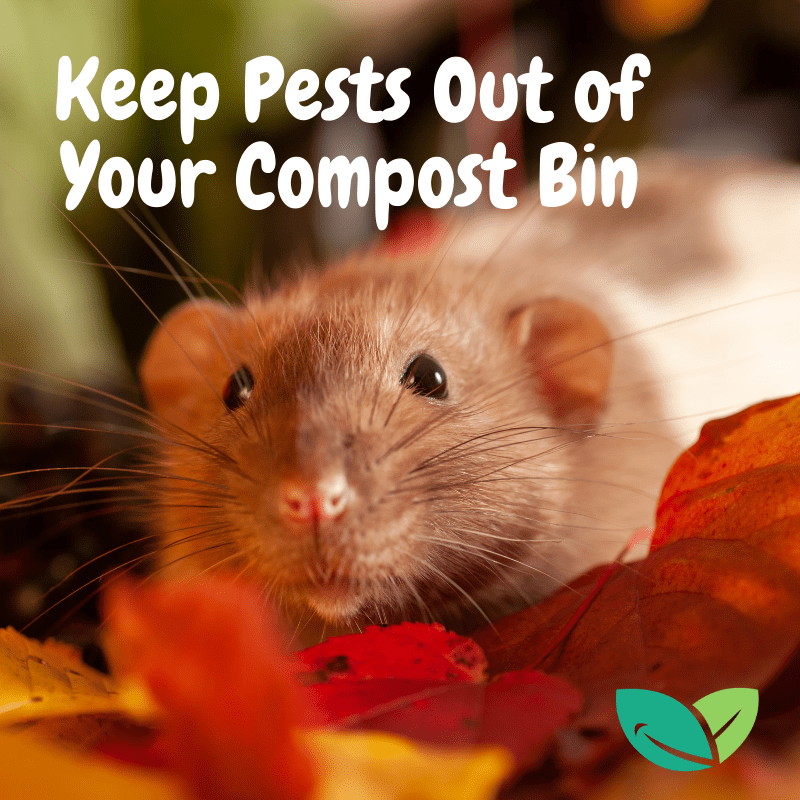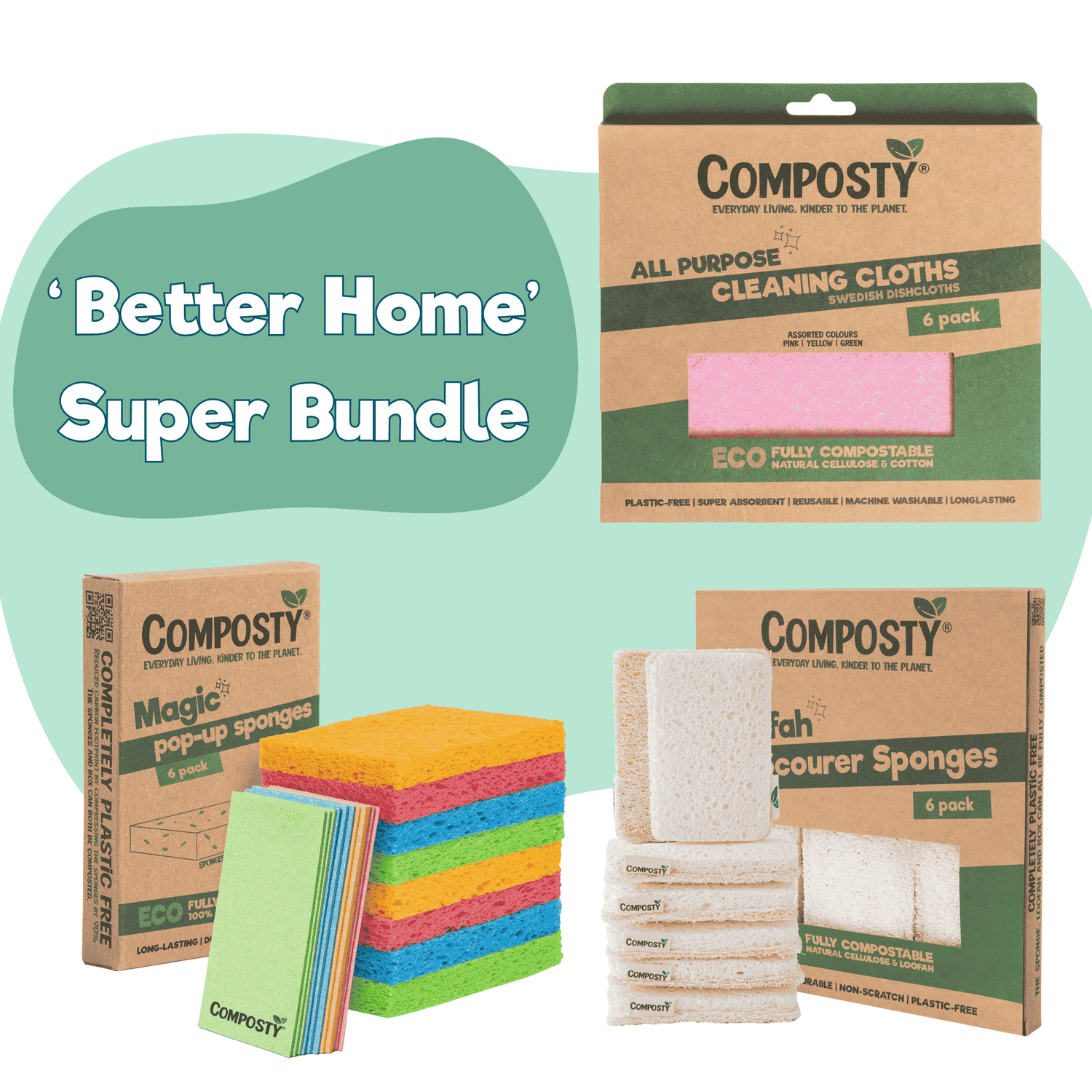
Keep Pests Out of Your Compost Bin
Attracting unwanted pests is one of the main concerns that new composters have. They don’t want a stinky pile of decaying debris near their home that attracts rats and other pests. Agreed. No one wants that and when a pile of compost is done correctly, there will not be an offensive odour emitting from or pests coming to it.
Composting is one of the easiest things you can do to help your garden be more productive. It’s also a great way to recycle food waste into useful plant food. Use these tips for starting your compost bin correctly and avoid pests in the future.
Pest Proof Bins
Commercial-made compost bins are for the most part pest-proof. However, if they are made from plastic and sit outside on the ground, rodents can still chew through the plastic.
Pest-proof any type of commercially made or homemade compost bin by placing wire mesh or hardware cloth on the ground under the bin. This will prevent burrowing rodents from chewing through the bottom of the bin. Use a fine 0.5cm (1/4 inch) mesh wire, not chicken wire, as the holes in chicken wire are too far apart to prevent rodents from getting through.
Some commercially made bins are on stands and rodents should not be a problem with this type. If an intelligent rodent finds a way to get into an off-ground or indoor compost bin, wrapping the bin in hardware cloth should solve the problem.
A compost pile that lies on the ground should have wire mesh or hardware cloth placed on the ground first before creating the pile. If the outdoor compost pile has a back or sides made from wood, block, etc., to keep the pile contained, line them with wire or hardware cloth too. Be sure to overlap the corners and use plenty of staples. Rodents can squeeze through very small holes.
Pile It Right
When the organic material is piled correctly in the compost bin or pile, the centre of the pile will become so hot that it will naturally repel all pests.
Layering brown and green organic material will promote faster decomposition, reduce odour, and won’t attract flies and other pests. Start and end a new pile of compost with a layer of brown material. The green organic material, like food waste, will go in between the brown layers.
The first layer in the pile should be brown tree leaves or grass. You can also include shredded newspaper and cardboard in the browns layers. Follow each brown layer with a green layer of fruit and vegetable peels, coffee grounds, crushed eggs shells, and most table scraps. Not all table scraps and food waste are good for the compost bin and will attract unwanted pests, and will talk more about that later.
Continue the layering process and top it off with brown material. This layering method will heat up quickly and keep the ants, roaches, earwigs, beetles, sowbugs, maggots, rodents, and all other pests away.
You can continue to add to the pile over the next week to 10-days. The goal is to have all the waste material decompose and transform into nutrient-rich compost at the same time. If you continually add more waste the pile will decompose at different rates, causing it to smell bad, attract pests, and be unusable for a longer time.
No-No Items
Dairy products, meat scraps, and bones are no-no items for the compost bin. While these items are food and will decompose, they don’t belong in the compost.
Dairy, meat, and bones are extremely attractive to many pests. It’s like ringing the dinner bell for them and they will take over your compost pile if these items are in it.
Another reason meat scraps and bones should not be added to the compost is the potential of them harbouring pathogens, like E.coli bacteria. If the compost pile is hot enough, the pathogens would be killed, however, if the pile’s not hot enough, pathogens could survive and be introduced to the garden soil.
Pet faeces and kitty litter are no-no items too.
Too Much Grass
Adding grass to the compost bin is great and it’s an ideal organic material to top the pile off with, as long as you don’t use too much.
Too much dead grass will smother the compost pile and stop the decomposition process. Just as mowed grass creates a smothering layer of thatch on the lawn, it will do the same in a compost bin or pile.
Dead, wet grass also is slimy, smelly, and attracts pests. If you have too many large tree leaves in the compost they can create odours that attract pests and slow down decomposition. Shred leaves with a mulching blade on the lawnmower before adding to the compost pile.
Turn It
The dead organic material in the compost bin needs oxygen to decompose. Turn the pile once a week to keep it oxygenated. When turning it, try to get the material around the edges into the centre where the pile gets the hottest. This will help the pile decompose at the same rate.
A large pitchfork is an ideal tool for turning the pile. If you notice any large white grubs in the pile while turning it, remove them and dispose of them so they won’t be introduced into the garden via compost. Other bugs can be hand-removed too if needed.
After turning make sure the top of the pile is covered with brown material to help avoid pests and stop odour. Sprinkling the top with used potting soil after potted perennial plants have ended their growing season is a great way to cover the top of the compost with brown material and recycle used potting soil.


2 comments
I might try your direction and let you know. I’m 73 so I just need some time.
Your information was top-notch I’m starting my compost a little late in the season but I’m finally getting the time to work it properly keep up the good work go with God